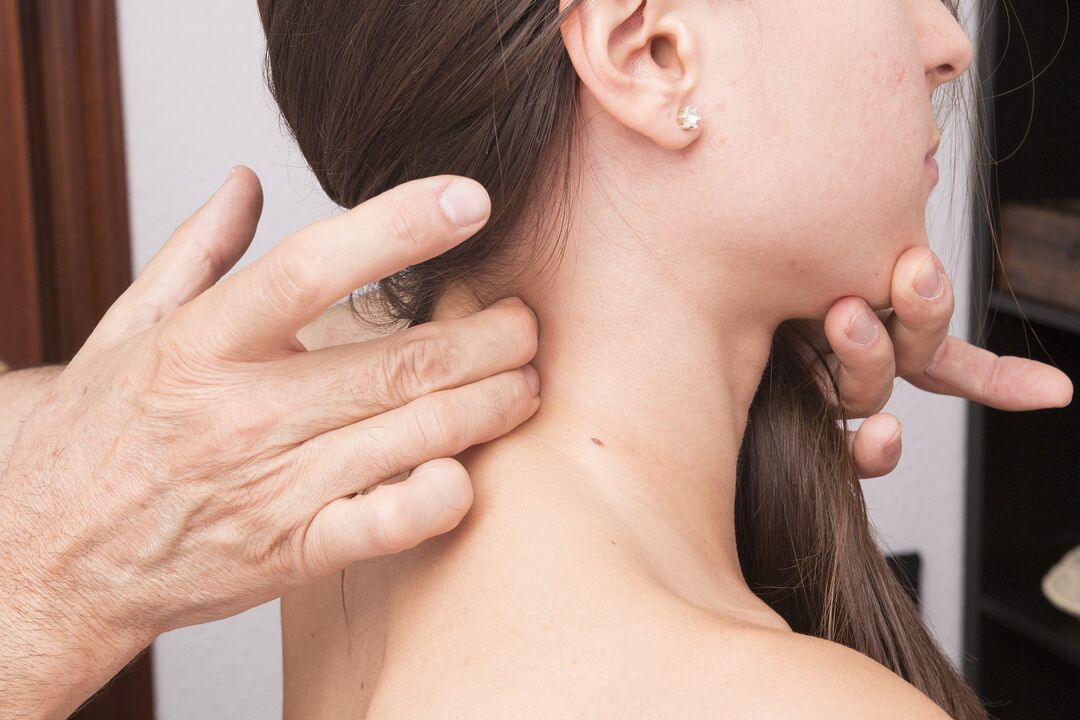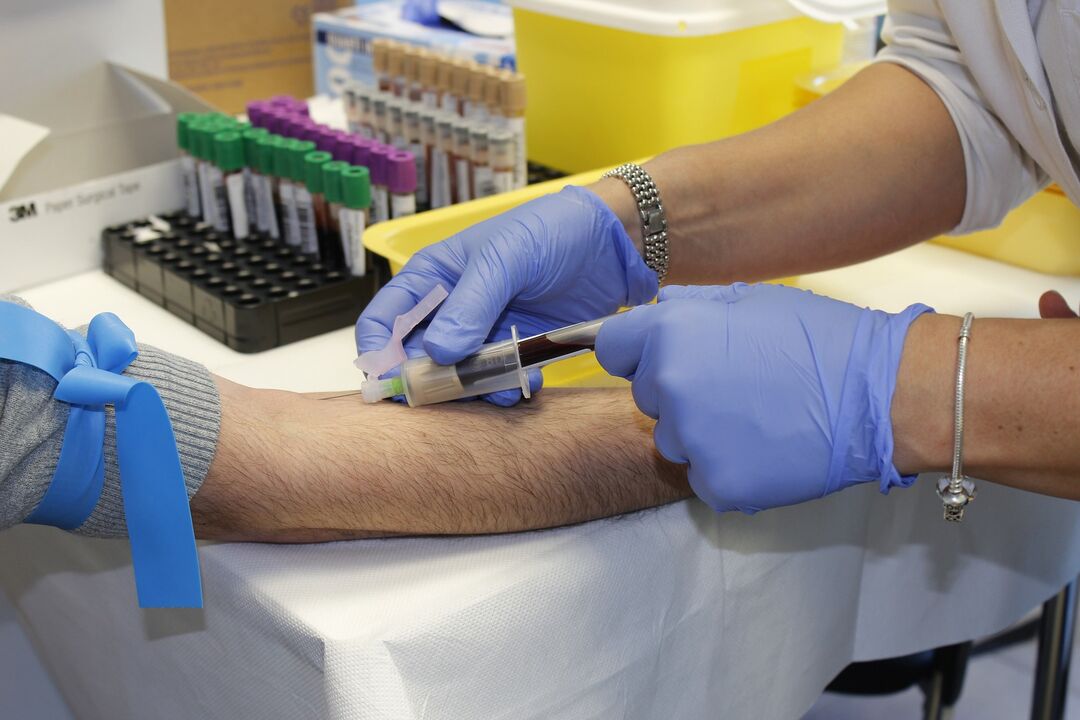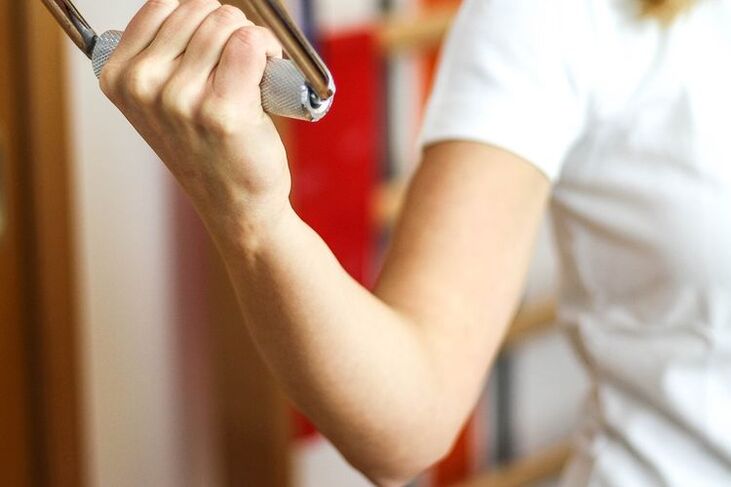Neck pain is a symptom that modern people suffer from very often, regardless of age and gender. The most common reason is working at the computer for long periods of time. And in general, a sedentary lifestyle significantly worsens this problem. However, this disease cannot be put on hold because the neck is an important part of the body. It consists of seven vertebrae and contains many arteries, muscles, nerves, organs and glands.

Pain may occur due to a seasonal cold or a more serious illness, injury, or sprain. There are other factors that can affect whether your neck and head hurt. We will analyze them in more detail in our review and also consider methods for treating and preventing congestion in the cervical collar area.
Nature of pain
Sometimes the neck hurts so much that it is difficult to determine which direction the lesion is located. Nevertheless, analyze your condition and try to determine the nature and location of the pain. This will help you decide what to do next. There are different types of neck pain:
- Acute – indicates dysfunction of the body.
- Chronic – lasts a long time, subsides and grows again.
- Visceral – the cause is damage to an internal organ.
- Superficial – usually these are smaller lesions on the skin.
- The inflammation is deep in the tissue.
- Central – associated with problems in the nervous system.
- Neuropathic – a disorder of the peripheral nerves, but in which the pain points are not affected.
It's a dull pain
Pressing, aching pain is often the body's reaction to unusually heavy physical activity. You can feel it the next day after training. Under stress, lactic acid accumulates in the muscles. There are signals to nerve receptors, this process causes an aching sensation of pain. When the upper body is stressed, not only the neck hurts, but also the back and shoulders. But there are other reasons:
- rachiocampsis;
- myalgia;
- inflammatory process in the muscles.
Acute pain
Attacks of sharp, painful shocks make any movement much more difficult. Living with these symptoms is very difficult, so begin testing and treatment immediately. It can be:
- osteochondrosis;
- vertebral displacement;
- Neuralgia;
- Intervertebral hernia.
Why and what does it hurt from?
Pay attention to which side of the neck it hurts, whether there is discomfort when turning, perhaps the lumbago radiates to the head or back. Before starting treatment, every detail is important.
Only on one side
If the pain is localized only on one side, there may be several factors:
- Hypothermia – drafts or walking without a scarf in the cold season can cause discomfort.
- Muscle cramps – Working out hard or carrying heavy weights can cause your muscles to become overworked. Remember if you carried heavy bags in the coming days - perhaps this is the reason.
- Uncomfortable bed – over time the mattress can sag and the pillow can become uneven. And just an unnatural posture while sleeping can lead to increasing pain in the neck area. Maybe you need to change something in your sleeping area.
- Cervical radiculitis is a consequence of the development of osteochondrosis. In this disease, the activity of the spinal nerves is disturbed. The result is a stabbing pain on one side of the neck.
- Tendonitis is an acute process that occurs in the shoulder joints and can cause pain on the right or left side.
- A retropharyngeal abscess is a complication that can form with advanced sore throat. Purulent processes spread to neighboring tissues and lead to the formation of an abscess.
All of these cases are not uncommon and the pain disappears within a few days. It is not necessary to see a doctor. But there are also more serious situations in which the neck hurts on one side - this is an injury caused by a strong turn of the head. This condition is also often observed in the pathogenesis if the patient suffers from a serious infectious disease, for example, tuberculosis.
Behind
The cervical spine consists of vertebrae and is the most mobile and at the same time the most vulnerable part of the spine. So if the neck hurts, there may be several factors of different nature.
- Osteochondrosis – in this case the neck hurts mainly in the back. The intervertebral discs become brittle and deformed. Hence: the occurrence of cervicalgia - a disease from the field of neurology. In this case, the patient feels sharp pain and throbbing. The hands and the back of the head become numb.
- Spinal stenosis is a disease of the spine that is often located in the upper part of the spine and can therefore be the cause of pain in the neck. The disease progresses through narrowing of the spinal canal and can be accompanied by numbness in the limbs.
In the back of my mind
The neck and back of the head are in close proximity to each other, which is why these two parts of the body often have problems together. Pain in the back of the head can occur due to:
- Sprains. The neck muscles are adjacent to the back of the head, so any damage will result in a headache in the back. This area of the body reacts particularly strongly to movements with a large amplitude, such as jumping or fast walking.
- Problems with the spine. As we have already indicated above, the neck consists of vertebrae and the back of the head is closest to the first. Therefore, it is common for there to be an injury in the ridge
Headache in the back of the head.
Causes headaches
The cause of headaches arising due to pathology in the neck can be stagnation of blood flow in the ridge.
- Sedentary lifestyle - at work you sit motionless at the computer for several hours and when you come home you do the same in a relaxed atmosphere. Many people live like this now. Therefore, neck pain that radiates to the head is not uncommon. At the same time, a feeling of weakness and apathy sets in. At risk: drivers, office workers, programmers, operators.
- Sudden movements – a sharp twist of the neck results in a pinched nerve that penetrates and can radiate to the head.
- Stress. The psychogenic factor also plays a role in the development of the disease. Constant nervousness and emotional overload cause tension in the neck muscles and neuralgia.
Growing bump
Tissue proliferation, accompanied by high body temperature, indicates that inflammatory processes are taking place in the body. The bumps hurt very much, you can't touch them and the body is weakened. A swollen lump on the neck is a sign of a serious illness.
- Infectious diseases - flu or sore throat - can lead to the formation of a lump. Pain is a sign of purulent inflammation. One of the main symptoms: It causes the patient pain when swallowing.
- Oncology – New formation processes in the lymphatic system lead to physically noticeable growths.
- A weakened body – the immune system gives alarm signals.
Pain in the neck and shoulders
Pain in the neck and shoulder girdle, associated with the growth of a lump, is an eternal companion for people who constantly perform heavy physical work. The main problem here, just like in the previous case, is the growing node. Just without high temperature. The formation causes pain when touched, but it is not that severe. However, this factor has a negative effect on the neck and shoulders. You can get rid of unpleasant sensations by changing your activity to something more comfortable for the body. A knot can be a symbol of:
- Fibrolipomas, lipomas or atheromas - the formation can grow from the size of a large wen to a noticeable hump. The growth process is reflected in neighboring parts of the body.
- Tumor – To conduct an accurate analysis, you need to contact an oncologist.
What to do?
If the pain doesn't go away within a few days, you need to go to the hospital. The doctor conducts an examination. To get a complete picture, you may need to undergo further tests:
- Tomogram.
- Cardiogram.
- Ultrasonic.
- Blood analysis.
- Roentgen.

After a series of examinations, the doctor will make a conclusion and prescribe the necessary procedures. When treating the cervical collar area it helps:
- Therapeutic gymnastics - a health complex helps to normalize the processes in the neck area, as well as throughout the body.
- Massage – performed only by manual therapy specialists; Self-massage can only be carried out after training with masseurs.
- Drug treatment – Antibiotics and painkillers help eliminate pain as a symptom and fight the cause of the disease if it is infectious in nature. In other cases, the tablets are selected strictly individually.
- A course of injections – the active ingredients in injections have better bioavailability, meaning relief occurs much sooner than when taking pills.
- Acupuncture is an oriental form of therapy in which the condition of the body can be significantly improved by influencing certain points on the body. It is better to combine it with a classic massage.
- Electrical stimulation uses pulsed current that dilates blood vessels and strengthens the body.
- Treatment with leeches – these worms are able to saturate a person's blood with useful components. Among them, hirudin is an anticoagulant – a substance that helps improve blood circulation and hematopoiesis.
Gymnastics for every day
Therapeutic exercises become an effective preventive measure. Just 10 minutes of exercise in the morning and your neck muscles will become stronger and your back more flexible. Perform all exercises 5-10 times.
- Sit upright in your chair. Slowly and clearly turn your face to the right, then to the left.
- Lower your chin and stretch your head toward the ceiling. Tilt your head back and feel the front of your neck stretch.
- The back remains straight, the head tilts parallel to the floor. Grab your chin with your right hand, turn your face to the right, and feel the side of your neck stretch. Do the same with your left hand to the left.
- Stand upright, raise your shoulders and let your arms run along your body. Freeze for 10 seconds, relax.

Folk remedies in the fight for neck health
Taking your grandmother's remedies to maintain your health will only improve your treatment results. Especially in combination with other methods. Note the recipes:
- Chicory infusion. Pour a glass of boiling water over a spoonful of herbs and leave for two hours. Strain and drink in small sips throughout the day.
- Mint compress. Add mint leaves to a glass of water and leave for several hours. Soak a cloth in the mixture and apply it to the sore spot.
- Mumiyo ointment. Mix honey, red pepper and mumiyo and simmer in a water bath for 30 minutes. Allow to cool and apply as an ointment.
- Echinacea. Take the medicine three times a day to strengthen your immune system.
- Add 100 g of honey and the same amount of chopped lard to a glass of warm milk. Take one tablespoon with meals.
The methods described here only help with mild forms of the disease. And prevention will protect you from this in the future. If the disease causes acute discomfort, do not self-medicate, but consult a doctor as soon as possible.




















